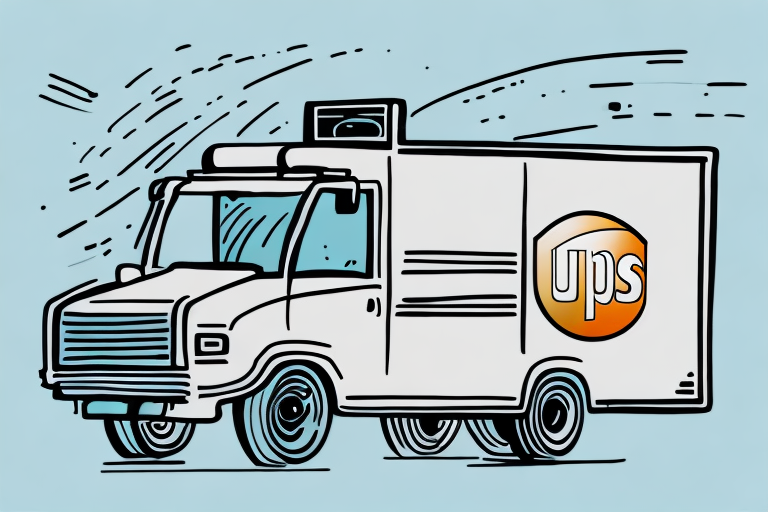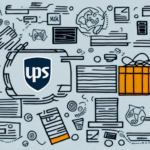Understanding UPS Shipping Rates in the US: Get Quotes Now!
Shipping products within the US can be a significant expense, especially if you're unfamiliar with the various shipping rates charged by carriers like UPS. This comprehensive guide will help you understand UPS shipping rates in the US and provide actionable tips to save money on your shipments. Whether you're a small business owner or an individual consumer, navigating UPS shipping rates can be daunting. Continue reading to learn how to avoid extra fees and secure the best possible quotes.
Introduction to UPS Shipping Rates
UPS shipping rates in the US are influenced by several factors, including destination, weight, and type of shipment. These rates are dynamic, fluctuating based on UPS's operational costs and market demand. Understanding how UPS calculates these rates and leveraging available discounts and promotions is key to obtaining the best rates.
UPS offers various shipping options, such as ground, air, and international services, each with distinct rates and delivery times. Ground shipping is typically the most cost-effective option for domestic shipments, whereas air shipping offers faster delivery at a higher cost. International shipping rates can vary significantly depending on the destination country and the nature of the shipment. Additionally, UPS provides tools and resources to help estimate shipping costs and track packages in real-time.
Factors That Affect UPS Shipping Rates
Several factors influence the cost of UPS shipping rates in the US:
- Destination: The delivery location impacts the shipping cost, with remote areas often incurring higher fees.
- Package Weight: Heavier packages typically cost more to ship.
- Package Dimensions: Larger packages may incur additional charges based on dimensional weight.
- Type of Service: Different services (e.g., Ground, Air) have varying price points.
- Delivery Timeframe: Faster delivery options usually come at a premium.
- Special Handling Requirements: Items that require special handling, such as fragile or hazardous materials, may increase shipping costs.
Additionally, the distance between the origin and destination plays a crucial role. The farther the distance, the higher the shipping cost. The nature of the item being shipped also affects the cost; for example, hazardous materials or fragile items may require special packaging and handling, increasing the overall cost.
For more detailed insights, refer to the UPS Shipping Factors documentation.
How to Calculate UPS Shipping Rates
The most straightforward method to calculate UPS shipping rates is by using the UPS Online Shipping Calculator. This tool allows you to input shipment details such as destination, weight, and package dimensions to estimate shipping costs. For more precise and customized quotes, especially for business needs, contacting UPS directly for a personalized quote based on specific shipment requirements is recommended.
UPS shipping rates vary depending on the selected service. For instance, UPS Next Day Air is more expensive but ensures faster delivery compared to UPS Ground. Businesses that ship frequently or in large volumes may also qualify for discounted rates, making it worthwhile to explore these options to minimize shipping costs.
According to UPS's 2023 report, businesses that utilize UPS shipping solutions efficiently can reduce their shipping costs by up to 20% through optimized packaging and negotiated rates.
Understanding the Different Types of UPS Shipping Services
UPS provides a variety of shipping services tailored to different needs:
- UPS Next Day Air: Guaranteed next-business-day delivery.
- UPS 2nd Day Air: Delivery by the end of the second business day.
- UPS Ground: Cost-effective ground delivery for domestic shipments.
- UPS Worldwide Express: International express delivery with tracking.
- UPS Standard: Economical delivery service within the US and Canada.
- UPS 3 Day Select: Guaranteed delivery within three business days.
- UPS Worldwide Saver: Express delivery to major international destinations.
Each service varies in pricing, delivery times, and specific shipping requirements. For detailed comparisons, visit the UPS Services page.
How to Choose the Right UPS Shipping Service for Your Needs
Selecting the appropriate UPS shipping service can be overwhelming, but considering the following factors can simplify the decision-making process:
- Delivery Timeframe: Determine whether you need overnight delivery or can accommodate several days for shipment.
- Package Size and Weight: Heavier and larger packages may require different services and incur varying costs.
- Shipment Destination: Decide if the shipment is domestic or international, as this will influence the choice of service.
- Special Handling Requirements: Identify if your shipment requires special handling, such as temperature control or fragile item packaging.
- Tracking Needs: Consider the level of tracking and visibility required for your shipment.
Additionally, evaluating the cost of each service against your budget and delivery needs is essential. For example, investing in faster delivery options may be worthwhile for high-priority or time-sensitive shipments. Conversely, if time is less of a concern, selecting a slower, more economical option can lead to significant savings.
According to a 2023 survey by Business Insider, businesses that align their shipping choices with their operational needs see a 15% increase in customer satisfaction.
Tips for Saving Money on UPS Shipping Rates
There are numerous strategies to reduce UPS shipping costs effectively:
- Use UPS Shipping Calculators: Compare rates between different services and carriers to find the most cost-effective option.
- Leverage Promotional Discounts: Take advantage of available discounts and special offers to lower shipping expenses.
- Be Aware of Restrictions: Understand any restrictions on your shipment, such as hazardous materials, which might increase costs.
- Ship During Off-Peak Times: Avoid surcharges by shipping during periods of lower demand.
- Opt for Ground Shipping: Choose ground shipping over air when possible to save money.
Additionally, businesses can negotiate rates directly with UPS based on shipping volume. Frequent shippers may qualify for lower rates, and utilizing third-party shipping services can also help in negotiating better deals. Proper packaging to avoid additional fees is another cost-saving measure; using the correct size and weight packaging materials can prevent overpaying for shipping.
Implementing these tips can lead to significant savings. According to the Forbes Shipping Optimization Guide, businesses adopting efficient shipping practices can reduce their shipping costs by up to 25% annually.
Understanding the Role of Distance and Destination in UPS Shipping Rates
The distance your shipment travels and its destination significantly impact UPS shipping rates in the US. Longer distances typically result in higher shipping costs due to increased fuel consumption and transit times. Additionally, UPS may impose extra fees for deliveries to remote or hard-to-reach locations, so it’s crucial to verify the accuracy of your shipment's destination to avoid unexpected charges.
Moreover, the weight and size of your shipment influence the cost. UPS employs a dimensional weight calculation, which factors in the package's size alongside its weight to determine shipping costs. To prevent overpayment, accurately measuring and weighing your package before shipping is essential.
For more information on how distance and destination affect shipping rates, visit the UPS Shipping Needs page.
How to Negotiate Better UPS Shipping Rates
Frequent shippers with UPS may have the opportunity to negotiate better shipping rates based on their volume and shipping history. To initiate this process, contact your UPS account representative to discuss potential options and determine if you qualify for special pricing or discounts.
When negotiating, come prepared with data on your shipping volume and history. Demonstrating consistent or increasing shipping activity can strengthen your case for lower rates. Additionally, exploring alternative shipping options, such as USPS or FedEx, can provide leverage in negotiations by highlighting competitive pricing from other carriers.
According to Inc. Magazine, businesses that actively negotiate shipping rates can achieve savings ranging from 10% to 30%, depending on their shipping volume and relationship with the carrier.
Comparing UPS Shipping Rates with Other Carriers like USPS and FedEx
To ensure you're securing the best possible price, it's essential to compare UPS shipping rates with other carriers such as USPS and FedEx. Each carrier has unique pricing structures, delivery times, and service offerings, making it important to evaluate which aligns best with your needs.
When comparing carriers, consider factors such as:
- Pricing: Review the cost differences for similar services across carriers.
- Delivery Times: Assess the delivery speed each carrier offers for your specific needs.
- Service Reliability: Evaluate the reliability and reputation of each carrier based on reviews and industry reports.
- Special Services: Determine if any carrier provides additional services that may benefit your business, such as advanced tracking or insurance options.
It's also crucial to weigh the reliability and reputation of each carrier. While one carrier may offer lower prices, they might not have the same level of reliability in delivering packages on time or handling them with care. Reading reviews and seeking recommendations from other businesses or individuals can help in making an informed decision.
According to a Statista report, UPS holds a significant market share in the US shipping industry, but USPS and FedEx also offer competitive rates and services that may better suit specific shipping needs.
Best Practices for Packing Your Shipment to Save on UPS Shipping Costs
Proper packaging is essential to avoid extra fees and ensure the safe delivery of your package. Consider the following best practices:
- Use Sturdy Boxes: Select boxes that can support the weight of your items to prevent damage during transit.
- Fill Empty Space: Utilize padding materials like bubble wrap or foam to fill any empty space within the box, reducing the risk of items shifting.
- Choose the Right Box Size: Opt for smaller boxes when possible to minimize dimensional weight charges and save on shipping costs.
- Label Correctly: Ensure your package is labeled accurately to avoid misdelivery and additional fees.
Additionally, consider the dimensions of your package, as UPS charges based on both weight and size. Accurately measuring and fitting your items into appropriately sized boxes can prevent overcharging. Using recycled materials for packaging can also contribute to cost savings and sustainability.
For detailed packaging guidelines, refer to the UPS Packaging Guidelines.
Understanding the Importance of Proper Addressing to Avoid Extra Fees
Accurate and complete addressing is crucial to avoid extra fees associated with delivery issues or incorrect addresses. Ensure that your shipment includes:
- Full Recipient Name: Include both the first and last name of the recipient.
- Complete Address: Provide the full street address, including apartment or suite number if applicable.
- Correct Zip Code: An accurate zip code ensures timely and accurate delivery.
Double-checking the address before shipping can prevent delays and additional charges caused by misdelivery or returned packages.
How to Track Your Shipment and Get Updates on Delivery Times
UPS offers comprehensive tracking information for all shipments, allowing you to monitor the status and location of your package throughout the shipping process. You can access tracking details by:
- Using the UPS Tracking Tool on their website.
- Signing up for email or text message notifications for real-time updates.
- Using the UPS mobile app for on-the-go tracking.
These tracking options provide valuable information on your shipment’s progress and estimated delivery times, enhancing your ability to manage and inform recipients effectively.
According to UPS, incorporating their advanced tracking systems can lead to a 95% on-time delivery rate, ensuring reliability and customer satisfaction.
Understanding Insurance Options for Your UPS Shipment
UPS provides limited liability coverage for damage or loss of your shipment as part of their standard service. However, for added protection, you can purchase additional insurance to cover the full value of your items in transit. This is particularly important for high-value or fragile items.
To explore insurance options, visit the UPS Value-Added Services page. Assess your shipment’s value and consider the cost-benefit of additional insurance to ensure adequate protection.
Research shows that businesses that invest in additional shipping insurance experience fewer financial losses from damaged or lost shipments, enhancing overall operational efficiency.
Conclusion: Getting the Best Quotes and Saving Money with UPS Shipping
UPS shipping rates can be complex, but with the right knowledge and tools, you can secure the best quotes and save money on your shipments. Key strategies include researching your shipping options, comparing prices and services, and utilizing promotional discounts. Proper packaging and accurate addressing are also critical to avoid extra fees and ensure your package arrives safely.
By implementing these tips and staying informed about UPS’s latest offerings and discount opportunities, you can achieve cost-effective and reliable shipping solutions. Whether you're shipping domestically or internationally, understanding UPS shipping rates and leveraging available resources will position you for successful and economical shipping within the US.
For more detailed information and resources, visit the ShipScience website.




















